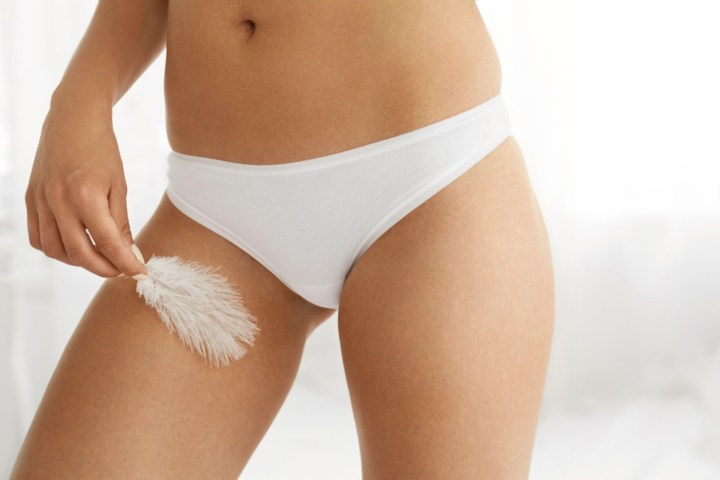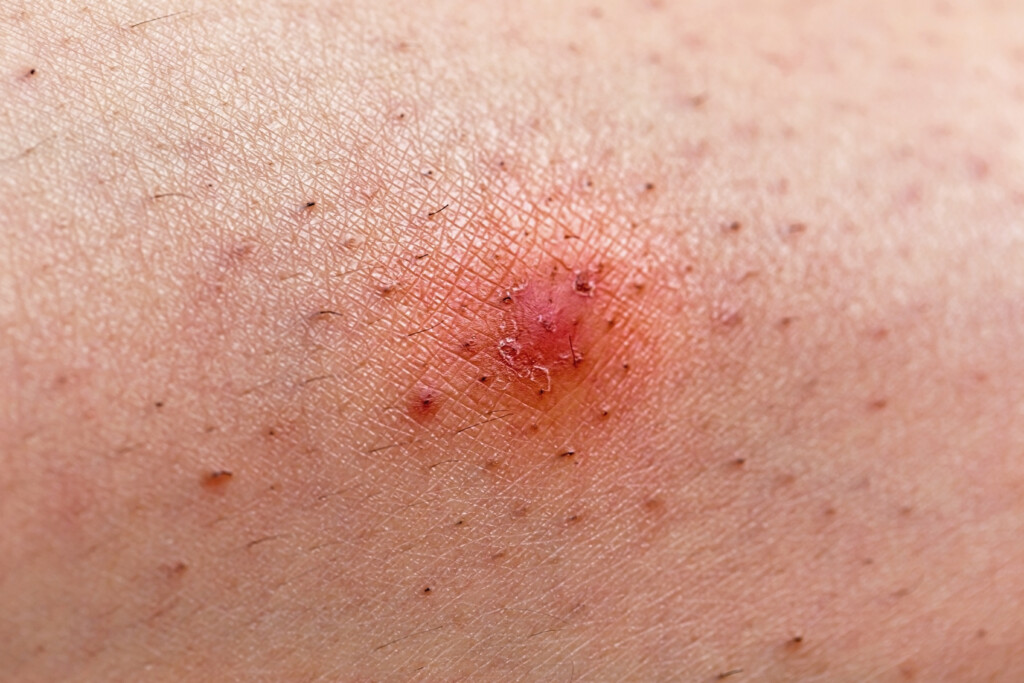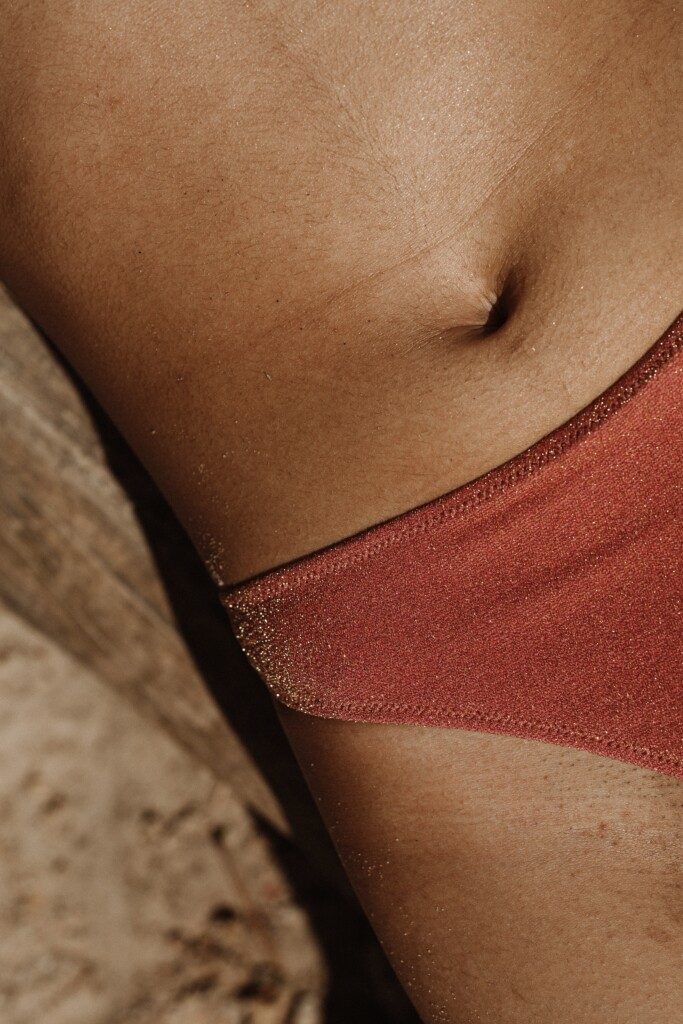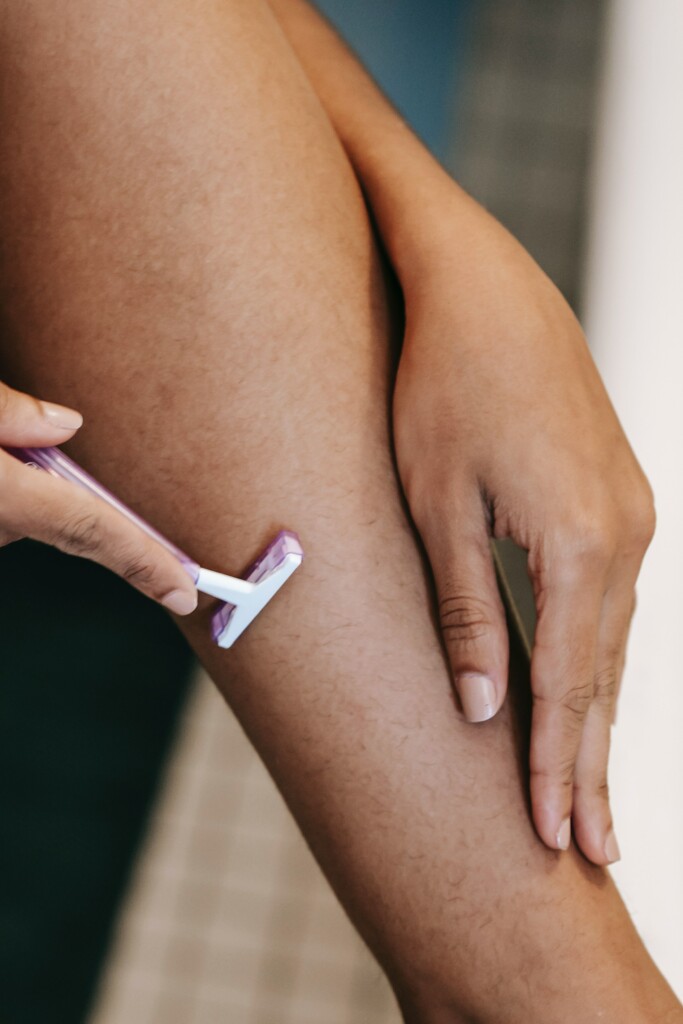
There are a lot of things to look forward to in the summer - ingrown hairs in the bikini area are certainly not one of them. And yet it happens that a hair grows in the wrong direction after shaving, causing redness, swelling and painful inflammation.

But don't worry: In our guide "SOS help against ingrown hairs in the intimate area" we explain to you how best to remove them - and of course also how you can prevent ingrown hairs or even avoid them completely.
Here we go!
Recognizing ingrown hair in the intimate area: The most common symptoms

How does an ingrown hair occur?
Ingrown hairs are nothing unusual at first. They occur when hair is removed with a razor or epilator. But why? There are several reasons for this.
1. Sharp hair edges
You've probably already noticed that your hair after... shave have a sharper edge and are no longer “soft”. It is precisely because of this hard hair edge that your hair can grow sideways into the skin - instead of straight up.
2. Thick hair texture
If you have frizzy, thick hair, you may experience this problem more often because coarse hair naturally tends to curl more and grow in the wrong direction.
3. Dead skin cells
Another cause can be dead skin cells, which clog the channels of the hair roots and, in combination with bacteria, lead to inflammation.
4. Tight clothing
If you put on tight clothing immediately after shaving, you will encourage hair ingrowth. Because as soon as the material rubs against your skin, the hair that grows can easily grow below the surface of the hair. Therefore: It is better not to wear tight pants in the bikini area immediately after shaving.

5. Epilate
The most beautiful thing about Epilate is that you can benefit from your hair removal for longer. A big disadvantage that is unfortunately often forgotten with this method: This type of hair removal promotes ingrown hairs because they hair root is damaged during epilation. As a result, the hair does not grow back straight, but rather encapsulates itself regularly and, in the worst case, grows in. If this has happened to you several times, you should switch to another hair removal method - for example, permanent laser hair removal.
Ingrown hair in the intimate area: Particularly vulnerable area of skin
Ingrown hairs can occur basically anywhere you have hair. However, hair most often grows on the legs, under the armpits and in the particularly sensitive bikini area, as we use these more often shave.
The skin in the bikini zone is particularly soft and sensitive. In addition, the frizzy and tight hair texture can cause the pubic hair that grows back to “curl back”. The tips of the hair then grow towards the delicate skin - and injure it.
The hair is noticeably softer under the armpits. But here too there is a risk of ingrown hairs. The skin in the armpit area is not only very soft, but also sensitive and elastic. After all, she has to be able to carry out all movements of the shoulder joint - from yoga to carrying boxes. This increases the risk that the skin will burn after shaving and that individual hairs will not just push through the hair funnel to the surface, but will grow in.
The hair on the legs tends to be thin and smooth and the skin is firmer. However, leggings, trousers or jeans that are too tight can rub directly on the skin and thereby influence the direction of growth of the hair that grows back.

You now know exactly what causes ingrown hairs and where they occur most often. But how can you avoid the mixed problem?
How to avoid ingrown hairs?
The truth is: stopping shaving, waxing or epilating at all would of course be the best option. But giving up smooth skin completely is not a solution for us either. That's why it's best to follow these tips if you want to avoid ingrown hairs.
1. Prepare your skin for shaving
Before shaving is after shaving. That's why it's recommended to take a warm shower first - because it softens the skin and opens the pores. Regular peelings also help to remove dead skin cells and prevent clogged pores. We recommend beta hydroxy acid, which dissolves top calluses.
2. This is how you shave gently
If you do shave, please make sure to shave in the direction of growth. Also look for sharp, rust-free blades - they will cut your hair cleanly and straight and reduce the risk of ingrown hairs. A shaving cream also minimizes friction between the blade and skin, which prevents breakouts and irritation. Otherwise it can happen quickly Razor burn come.
By the way: Did you know that dry shaving can cause ingrown hairs? At a Dry shave The blade does not slide easily over the skin and therefore cannot cut the hair cleanly. So: It's better to invest a few more minutes of time and shave wet. This is gentler and more effective.
3. Use care without perfume and alcohol
Whether shaving, epilating or Waxing: After the procedure, your skin needs moisture. Cooling, calming active ingredients such as: Aloe verathat care intensively for the affected areas – read our article “Care after waxing“. On your healthy, well-moisturized skin, new hair comes out of the pores better and grows in less quickly.

In addition, for beautiful skin without inflammation, it is worth investing in a special shave balm to combat unruly hair. Active ingredients like Vitamin E nourish the skin and also help bring individual hairs to the surface. This prevents painful inflammation, but also pimples, redness or cuts.
Removing ingrown hair in the intimate area: Do's and Don'ts
Your skin is inflamed, painful and swollen. The only thing you want now is to get rid of that hair. The only question that remains is how you can do this safely and painlessly.
Let's start with what you shouldn't do.
Don't
Better:
do
Attention: If the ingrown hair forms a lump, abscess or cyst, you should definitely go to the dermatologist. This then removes the hair - under local anesthesia - with one incision. It is also advisable to consult an expert if you have an inflammation of the hair follicles. In the worst case, bacteria can get into your bloodstream.
No more ingrown hairs with laser removal
Prevention isn't enough for you, you really want to make sure that a hair never gets lost while growing out again? There are many Methods to permanently remove hair. The laser is an option to put an end to annoying hair in sensitive areas once and for all.
In order to be able to permanently remove problem hairs, we at Sanft & Schön rely on them diode laser-Technology. This guarantees quick, safe and effective hair removal.

The diode laser is a semiconductor and reaches a wavelength of 755 nm, 808 nm or 1064 nm. This is ideal for deep-seated Hair follicles to reach and treat thick hair - for example on the back.
This is how it works: By penetrating the light into the superficial layers of the skin, it absorbs Melanin the skin energy. This converts light energy into heat - and damages the surrounding cell structures that are responsible for hair regrowth.
The result: Your skin will remain permanently hair-free. This is particularly effective
Laser hair removal in Berlin for light skin and dark hair - but also all other skin and Hair types can be treated gently and effectively with us.
At Sanft & Schön we only work with the latest, top-quality medical equipment in order to achieve the best results for you. By the way: Permanent hair removal is no longer just a woman's job. One Laser hair removal for men also offers numerous advantages – whether for hygienic and aesthetic reasons or for sporting ambitions.
You want more about the permanent Laser hair removal at Sanft & Schön in Berlin? No problem! We would be happy to share our know-how with you before your appointment and provide you with detailed information about the laser hair removal process and how it works Risks.
If lasering is too final for you on your first visit, you can have your hair professionally waxed in our waxing studio Warm wax Have it removed - and then enjoy smooth skin for up to four weeks.
We also offer all kinds of facial treatments Sanft & Schön on, like that Microneedling, the Aquafacial as well as Microdermabrasion/-and Acne treatments in Berlin.